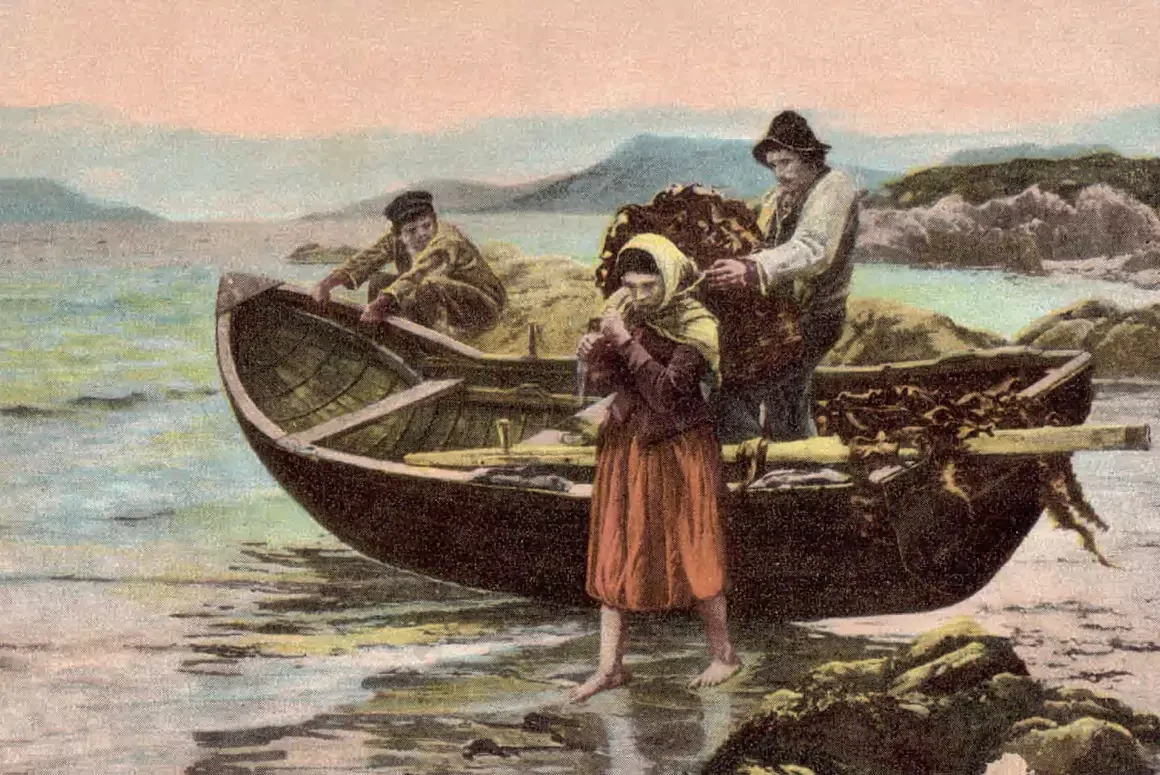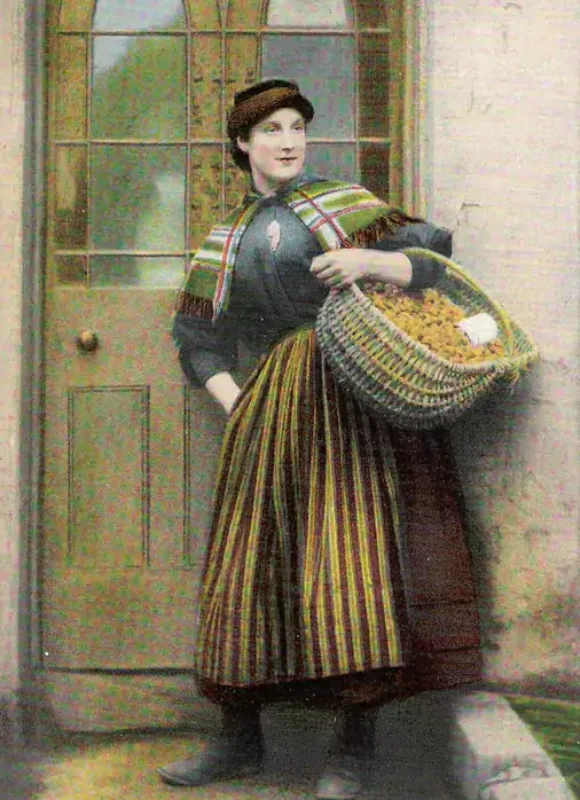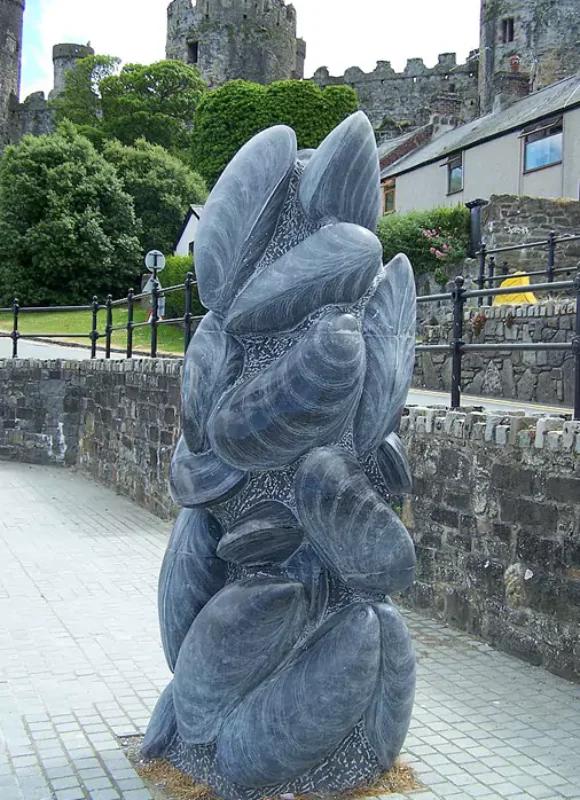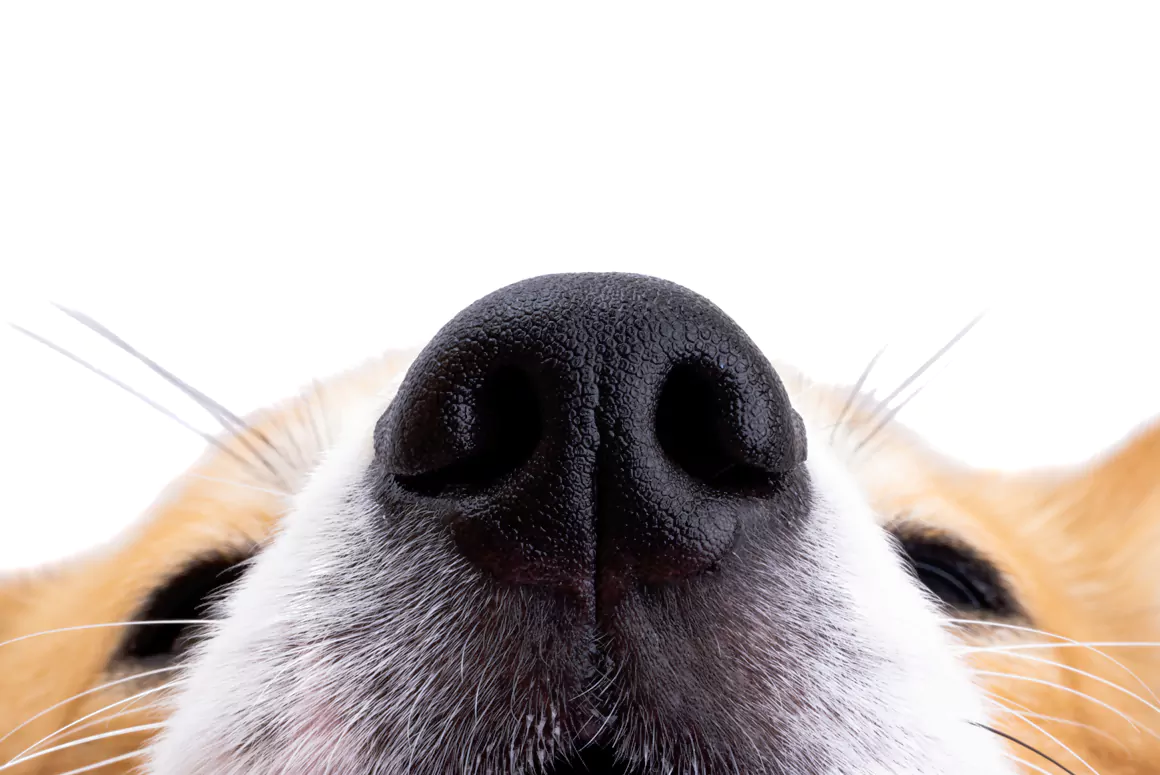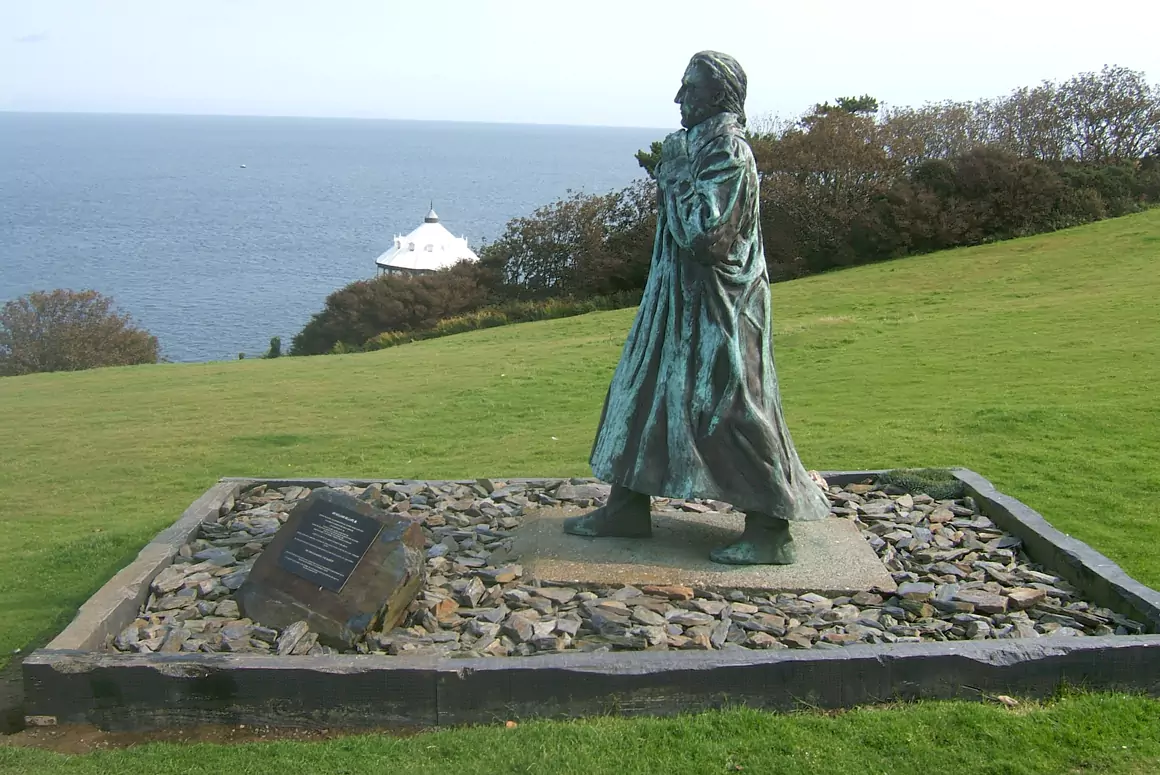![]()
This month Karen Foy takes a look at the history behind some of Wales’ coastal culinary delights.
From farmland to coal mines, over the centuries Wales’ natural resources have provided employment for thousands. As a result Welsh food has developed to satisfy the appetites of hardworking farm labourers, coal miners and quarry workers.
Prior to food manufacture and processing techniques, our ancestors relied on ingredients they had grown themselves, on their animals to provide meat and dairy products, and the hedgerows, fields and rivers for ‘free food’ they could pick and gather without any monetary outlay. They were entirely reliant on the seasons and on what Mother Nature could provide.
But it was perhaps those living near the coast that had the widest variety of extra resources they could bring to the table – the fruits of the sea.
With over one thousand miles of walkable coastline now accessible by the Offa’s Dyke Path and Welsh Coastal Path, it brings home to us just how much of our country is bordered by the sea. Hundreds of fishing communities quietly made their livelihoods by selling their catch and feeding their families on what would have been an extremely healthy diet.
Marvellous Mussels
Dominated by a thirteenth-century castle, the harbour town of Conwy has a long history of mussel fishing. Mussels have been found in North Wales since prehistoric times, with the Mya Margaritifera variety, or in Welsh, the ‘Cragen y Diluw’ being the most sought-after – not just for their meat but also as pearl producers.
They were coveted by the Romans; it is said that Julius Caesar only invaded Britain so that he could own his own pearl fisheries. And legend has it that in the 1640s Welsh merchant Sir Richard Wynn of Gwydir presented the wife of Charles I – Queen Henrietta Maria – with a pearl, found in a Conwy mussel, thought to have gone on to form part of the early Crown Jewels.
During the early 1800s over four kilos of pearls were sent from Conwy to London jewellers every week, but collecting these prized possessions was no easy task. The mussel season ran between September and April when the fishermen would wait for the tide and then head out in their boats to the mussel beds. The tools used were basic for such a hazardous job, requiring the men to use an eighteen-foot rake to scrape the mussels off the beds and haul them onto the little boats. Pearl agents would deal with the local fishermen, weigh the pearls, using small scales, agree a price and arrange transportation of the cargo to the capital.
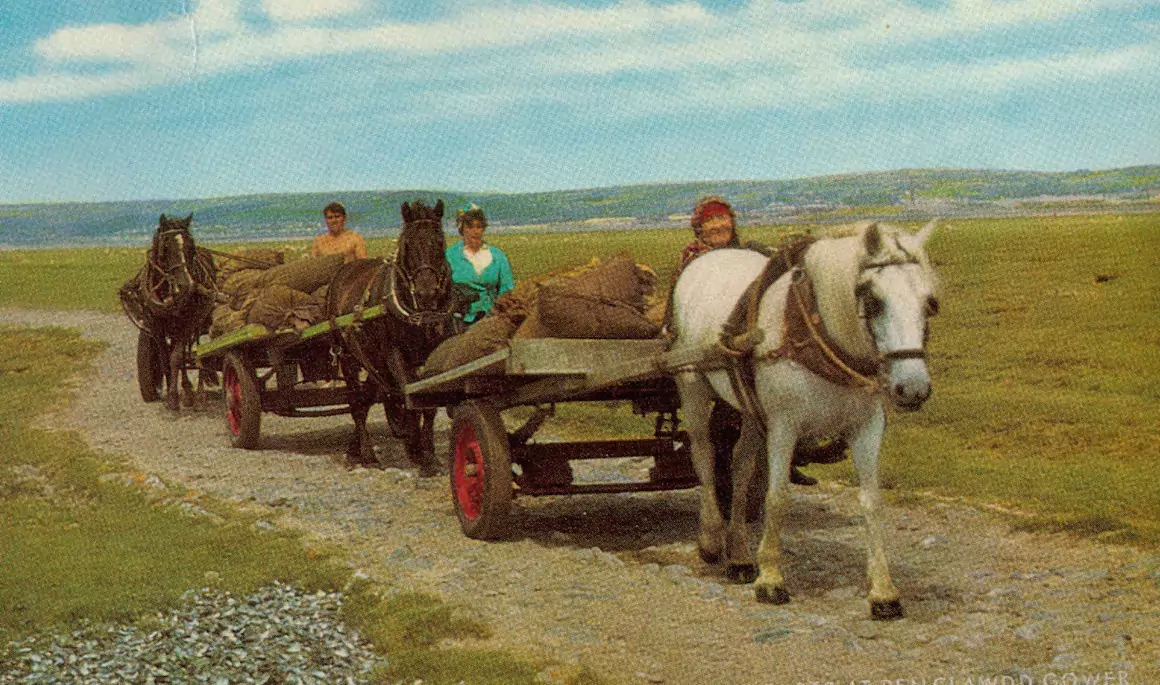
The shellfish business also ensured work for the womenfolk, who would gather mussels from the shore or prize them from rocks, scraping them clean with a small knife fashioned with a spoon-shaped blade, binding their hands to protect them from the sharp shells. In the town they would help out in the pearling kitchens where the mussels were ‘mashed’ to extract the tiny seed pearls and the remains ‘recycled’ (evidence of this old tradition in the form of crushed mussel shells has been found in the foundations of some of Conwy’s oldest buildings).
The shellfish business also ensured work for the womenfolk,
who would gather mussels from the shore.
They were initially sold straight from the sea, but an outbreak of typhoid in Birmingham after the First World War resulted in the Ministry of Agriculture announcing that seafood should be purified. In Conwy a site for processing the mussels was set up at Benarth Beach, where they received a final bath of chlorine before being loaded into sacks and sent to market.
In 1994 a new purification plant opened on the Conwy quayside and fresh mussel beds were re-laid with the help of the Mussel Development Agency. Although the number of mussel men working this area has dwindled considerably, this once thriving industry has seen renewed success – despite many challenges – as they strive to keep traditions and fishing methods alive. Acknowledged for their size, taste and good quality meat content, Conwy mussels are highly prized in local restaurants and eateries much further afield.
A sculpture dedicated to local mussel traditions was created by Graeme Mitcheson and erected in a prominent position on the quayside in 2007.
- A Welsh Cockle Girl - Darren Wyn Rees ( CC-BY-SA-4.0)
- Mussel sculpture, Conwy
Cockle Collection
Cockles were once one of the staple foods of the fisherman’s table, with Penclawdd on the Gower Peninsula being one of the most popular cockle-gathering areas.
Originally a female task, the women would work along the shoreline in all weathers as they carried out the back-breaking job of extracting the shellfish from the beach. A short-handled ‘rake’ was used to draw the cockles out of the sand before sieving them through a ‘riddle’ to ensure that the smaller cockles were left to increase in size and replenish the beds.
The women developed a distinctive form of dress – or uniform – with their outfits adapted by wearing multiple layers of clothing covered by a customary dress of red and black which would be pinned up at the waist to reveal a Welsh flannel petticoat beneath. To keep them warm, a shawl covered their shoulders and an apron would help protect their dress from the muddy sand. A smaller version of the Welsh hat – known as a Cockle Bonnet – was worn, trimmed with white lace and topped with a thick pad called a ‘doreb’ which cushioned their heads and hats from the weight of the cockle pail or basket.
The work was often hazardous, especially in foggy conditions,
which could distract the pickers
The work was often hazardous, especially in foggy conditions, which could distract the pickers, leaving them stranded on the sand and surrounded by the incoming tide, so a good knowledge of the local geography was essential. Once collected, the harvest was transported from the beach on donkeys and sold throughout the villages.
Originally part of the fisherman’s family menu, cockles are now something of a gourmet item, in part due to their scarcity and the dwindling cockle-picking trade. They are still collected by hand but tractors have replaced the donkeys and the shellfish themselves are processed in factories.
In Search of Seaweed
Every country has its traditional dishes and recipes, passed down and enjoyed from generation to generation, and Wales is no different. Various foodstuffs – usually prevalent, easily sourced, grown or produced in a particular area – can become staple ingredients in national dishes or regional cuisine.
Still gathered today off the Gower Peninsula and the Pembrokeshire and Carmarthen coasts, an edible form of seaweed known as Laver provides a rich and nutritious meal, high in protein, iron and vitamins. It was a staple breakfast dish of eighteenth-century pit workers. By the mid nineteenth century it was known to have been made into a hot sauce and served with mutton.
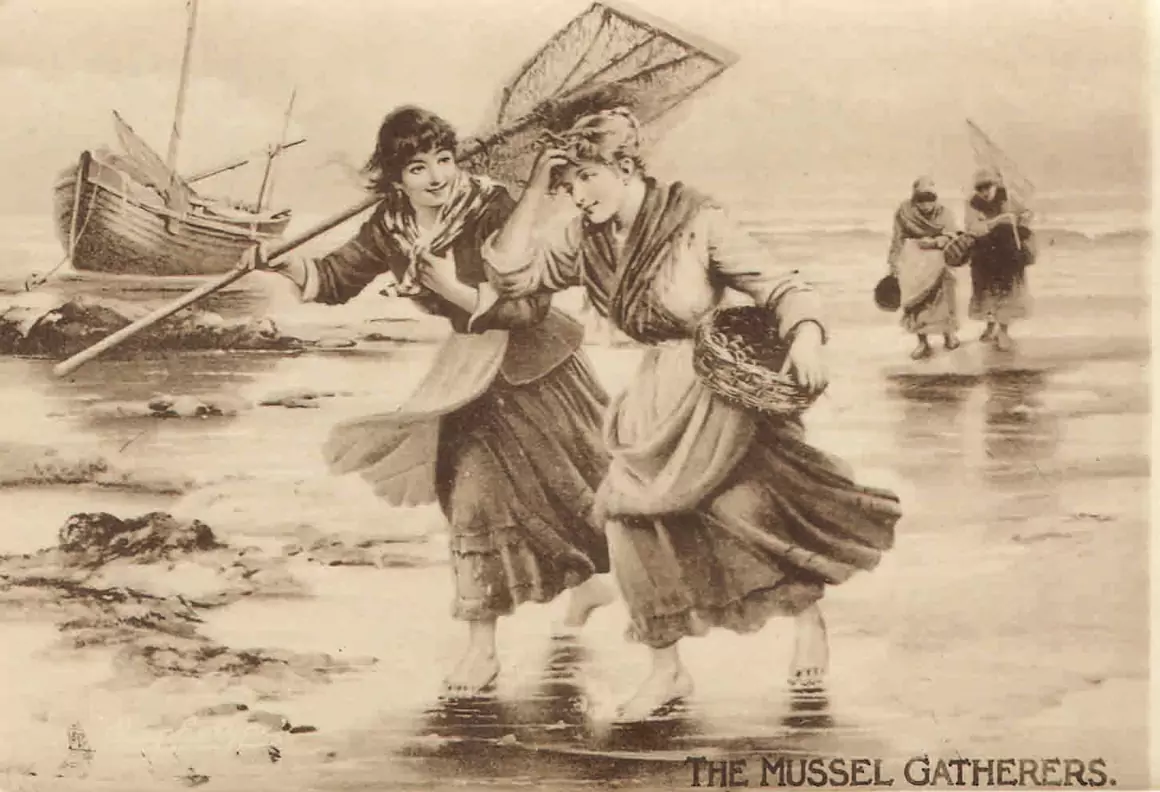
Over the years, Laverbread, or in Welsh ‘Bara lafwr’ or ‘Bara lawr’ has become a Welsh delicacy. Made by boiling the seaweed for several hours before mincing it into a paste, it is then sprinkled with oatmeal, fried and served with bacon and cockles as part of a traditional Welsh breakfast.
Although primarily a food source, seaweed was also gathered to be dried and burnt as fuel, or spread over land and dug in, or the burnt ashes sprinkled over the soil to act as manure. Men and women raked the seaweed from the shoreline before their harvest was taken up off the beaches by horse and cart and spread out in drying huts.
Now, in the twenty-first century, as we support our Farmers’ Markets and innovative home grown/made producers, let us remember those ‘almost forgotten’ trades of the Welsh coast and pay homage to the select few who continue to keep these fascinating aspects of our cultural heritage alive.
Words & Images: Karen Foy
Mussel sculpture, Conwy © Darren Wyn Rees (CC-BY-SA-4.0)
First published in Welsh Country Magazine Jul-Aug 2013


